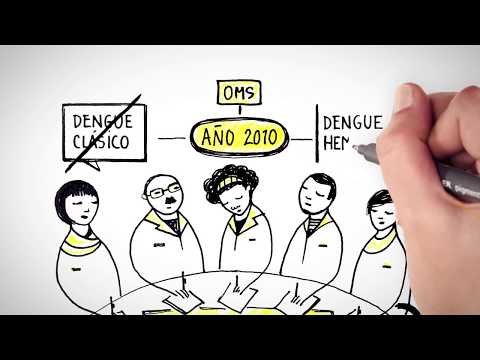Global Courant 2023-05-24 08:33:52
According to information from the World Health Organization (WHO) and the Pan American Health Organization (PAHO), dengue is transmitted through the bite of an infected mosquito.
The information highlights that dengue is a disease that affects people of all ages and can progress to severe forms.
This condition has a stationary behavior, that is, in the Southern Hemisphere most cases are registered during the first half of the year, while in the Northern Hemisphere, the cases occur mostly in the second half of the year, the WHO clarifies that this pattern of behavior corresponds to the warmest and rainiest months.
stages of the disease
In the febrile phase, dengue patients develop a sudden high fever. This acute phase lasts from 2 to 7 days and is usually accompanied by facial redness, erythema, body pain, headache, and retro-ocular pain.
According to the WHO, minor hemorrhagic manifestations may occur, such as petechiae and ecchymosis on the skin.
Patients who improve after the fever subsides are considered dengue cases without warning signs.
Problems that can occur in the febrile phase: dehydration; high fever can be associated with neurological disorders, and seizures in young children.
Patients who worsen with the drop in fever and present alarm signs are cases of dengue with alarm signs. In the critical phase, the problems that can occur are shock due to extravasation of plasma; severe bleeding and serious organ involvement.
recovery phase
The information from the WHO details that when the patient survives the critical phase (which does not exceed 48 to 72 hours), he goes to the recovery phase, in this phase there is an improvement in the general state, appetite is recovered, gastrointestinal symptoms, the hemodynamic state stabilizes -abnormal blood pressure-, and diuresis -urine excretion- increases.
How dengue is transmitted
In the Americas, the main vector responsible for the transmission of dengue is the Aedes aegypti mosquito. It is transmitted by the bite of a mosquito infected with one of the four serotypes of the virus.
It is a febrile illness that affects infants, children and adults.
Symptoms
The infection may be asymptomatic. Symptoms can range from a moderate fever to a disabling high fever. Severe headache Pain behind the eyes Muscle and joint pain Rash The disease can progress to severe dengue, characterized by difficulty breathing and severe bleeding and/or serious organ complications. There is no specific medicine to treat dengue.
What to do if you have symptoms
Consult your doctor. Watch out for warning signs. Do not self-medicate, do not use aspirin, because its effect can cause bleeding, according to the WHO. Do not use antibiotics because dengue is caused by a virus and antibiotics only attack bacteria.
Where does the mosquito breed?
The WHO article explains that Aedes aegypti prefers to lay its eggs in artificial containers that contain water (drums, barrels and tires, mainly) in and around homes, schools and workplaces.
Aedes aegypti eggs can withstand dry environmental conditions for more than a year: in fact, this is one of the most important strategies the species employs to survive and propagate.
How to remove it
To eliminate mosquitoes, WHO recommends avoiding the collection of water in outdoor containers (pots, bottles, or other containers that can collect water) so that they do not become breeding grounds for mosquitoes.
Properly cover water tanks and reservoirs to keep mosquitoes away; avoid accumulating garbage, throw garbage in closed plastic bags.
In a video, PAHO explains that in 2010 a group of WHO experts proposed a new classification, that is, it is no longer classic dengue, nor hemorrhagic dengue, now it is dengue without alarm signs, dengue with alarm signs, and dengue serious.








